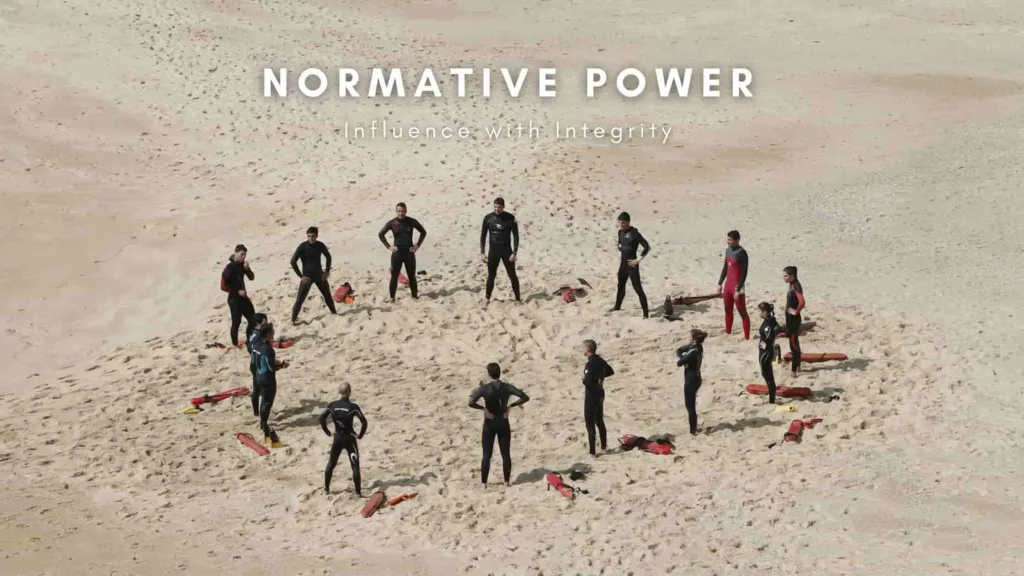Normative influence is when we act in a certain way because we want to fit in with a group and be liked by others. It’s different from informational influence, which is about wanting to be correct and know the right answers. Normative influence is more about being accepted and not being left out.
What is Normative Influence?
Normative Influence: Changing what you do to fit in and be liked by others.
Normative influence is when people change their behavior to fit in with a group and gain acceptance. For example, imagine you start eating at a popular new restaurant because all your friends are going there. Even though you might prefer a different place, you choose to follow your friends’ lead to be part of the group and avoid feeling left out. Another example is, If everyone in your office is talking about a new TV show, you might start watching it too, even if you’re not interested. You do this because you want to join the conversations and be part of the group.
Key Features of Normative Influence
Wanting to Fit In
People change what they do because they want to be part of the group and not stand out. For example, you start wearing the same brand of sneakers as your friends because you want to fit in and not feel different.
2. Fear of Being Left Out
People do things the way the group does them because they don’t want to be left out or rejected. For example, you laugh at a joke even though you don’t find it funny because you’re scared of being left out of the conversation.
3. Looking for Approval
People act in ways that they think will make others like them or give them praise. For example, you agree with your friends about which movie to watch, even if you have another favorite, just to get their approval
4. Acting One Way in Public and Another in Private
People might show they agree with the group when others are watching but feel differently when they are alone. For example, you pretend you like a popular TV show when you’re with your friends, but you actually don’t watch it at home.
5. Following Group Rules
People do things the way the group expects, even if they don’t fully understand or agree with the rules. For example, you follow the rules of a new board game, even though you don’t really get how to play, just to be included in the game.

Mechanisms of Normative Influence
Let’s see how normative influence works, with easy explanations and examples for each mechanism:
1. Peer Pressure
People change their behavior because their friends or group are doing something and they don’t want to be left out. For example, If all your friends are buying a new video game, you might buy it too just to be part of the fun and not feel left out.
2. Social Norms and Expectations
People follow unwritten rules about how to act in different situations to meet the group’s expectations.
For example, when you go to a formal dinner, you follow the rules like using utensils properly because you know it’s expected.
3. Social Comparison
People look at what others are doing to figure out how they should behave in a situation. For example, If everyone in your class is studying hard for an exam, you might study more too because you see that’s what others are doing.
4. Group Cohesion
People feel stronger pressure to follow group norms when they feel a strong sense of belonging to the group. For example, If you’re part of a close-knit sports team, you might follow the team’s rules and practices more closely because you really care about being a part of the team.
Theories and Research
- Asch’s Experiments: Asch showed that people often go along with wrong answers in a group because they want to fit in, even when they know the right answer.
- Sherif’s Autokinetic Effect: Sherif showed that when people are unsure about something, they look to others and start to follow the group’s ideas.
- Deutsch and Gerard’s Theory: They explained that we are influenced by two things: normative influence (wanting to fit in) and informational influence (wanting to be right).
Implications
1. Social Change
Normative influence can be a powerful way to create social change by changing what people think is normal or acceptable. For example, social justice movements work to shift societal norms to reach their goals, like advocating for equal rights.
2. Marketing and Advertising
Marketers use normative influence to get people to buy their products or services. They often show that a product is popular or trendy to make you think it’s the right choice.
3. Education and Training
In schools and training programs, normative influence can help encourage good behaviors. For instance, setting standards for good grades or respectful behavior can shape how students act and think.
4. Health and Safety Campaigns
Health and safety campaigns use normative influence to encourage healthy habits. By showing that many people are practicing healthy behaviors, these campaigns try to get others to follow along and adopt those habits too.
Related Article: Group Polarization: When Groupthink Goes Extreme
Normative influence is a strong force that shapes how we act and interact with others. When we understand how group norms and social pressures affect us, we can handle social situations better, make positive changes, and improve ourselves in personal and work life. Whether it’s from peer pressure, seeking approval, or following public behavior, normative influence is important in how we follow societal rules and expectations.

Pingback: Informational Influence: Influenced by Knowledge